What is a plug-in hybrid, or PHEV?
Plug-in hybrid cars combine an electric motor with an internal-combustion engine in an attempt to offer "the best of both worlds". Here's how they work...
If you’re not quite ready to make the switch to driving a fully electric car, you may be looking at a plug-in hybrid (PHEV) as something of a best-of-both-worlds solution. As with any type of hybrid, they have advantages and disadvantages. But with some of the best plug-in hybrids now claiming over 50 miles of electric range, is a PHEV the best hybrid type for your needs?
Here, we're going to explain the differences and similarities between plug-in hybrids and the other types of hybrid car, which are hybrids (sometimes called 'full hybrids' or abbreviated to 'HEV', for 'hybrid electric vehicle’) and mild hybrids (sometimes abbreviated to 'MHEV', for 'mild hybrid electric vehicle').
Just like other types of hybrid, plug-in hybrids combine an internal-combustion engine with an electric motor and battery. Unlike 'full' hybrids, though, they need to be plugged in to charge on a regular basis in order to operate as intended.
Both non-plug-in and plug-in hybrids use an electric motor and combustion engine to drive the car. These can operate independently or combined, but the plug-in's larger batteries allow the motor to be used for much longer distances – typically 20 to 30 miles or more, compared to only a mile or two for a non-plug-in.
PHEVs occupy a middle ground between battery-electric vehicles and full hybrids. The main practical difference between them and battery-electric vehicles is that they can keep driving after their battery is fully depleted, relying on the internal-combustion engine alone to turn the wheels.
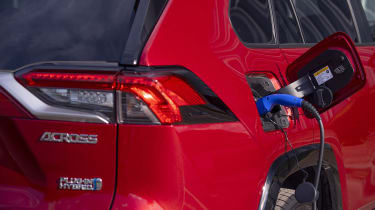
How does a PHEV (plug-in hybrid) work?
Plug-in hybrids generally have a battery connected to an electric motor, with the battery being larger than what you get in a 'full hybrid, but smaller than what you get in a purely electric car.
The Renault Captur E-TECH plug-in, for example, has a 9.8kWh battery. Plug-ins also feature an internal-combustion engine, which is usually a petrol, but can sometimes be a diesel, as in the case of the Mercedes E-Class hybrid.
A PHEV's battery is charged from the grid, meaning you need to plug the vehicle into either a regular domestic socket, a home wallbox or a public charging point. Usually, the electric motor does all the driving at slower speeds, until the battery runs out or you call for a level of speed and acceleration where the combustion engine’s additional power is required.
Driven gently, PHEVs can typically run for 20 to 30 miles or more on electric power, after which the internal-combustion engine takes over. Some of the more recently launched models, such as the BMW X5 and Mercedes GLE plug-ins, stretch this range to over 50 miles or more.
However, the battery doesn’t have to be empty for the engine to come on. This can happen if the electric motor is too cold or too hot, or when features that draw a lot of power such as the heater or air-conditioning are turned on.
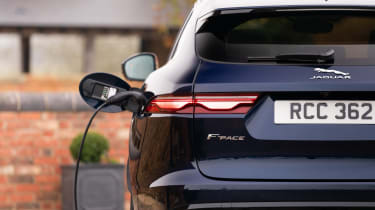
Advantages and disadvantages of plug-in hybrids (PHEVs)
Plug-in hybrids address one of the big concerns buyers have about electric vehicles, which is battery range. Many looking to switch to an electric car may be worried about how far they can get in a pure-electric car and the time it takes to recharge the batteries fully.
With a PHEV, as mentioned above, the internal-combustion engine takes over from the electric motor when the battery runs down. But many UK motorists' daily commutes and errands could easily be done in electric mode. And when it comes to longer trips, you don’t have to worry about the batteries running out, as the car automatically switches to the internal-combustion engine.
However, there are a few drawbacks. Because plug-in hybrids effectively have two different powertrains, they weigh more than conventional cars. This has an effect on ride quality, with plug-in hybrids often feeling heavier and harsher than purely internal-combustion-engined vehicles, especially on poorer roads.
It can also be difficult to achieve the claimed fuel-economy figures for plug-in hybrids, which frequently run well into three figures. Depending on your driving style, distances covered and how easily you can top the battery up in the evening, you may see closer to 30 or 40mpg.
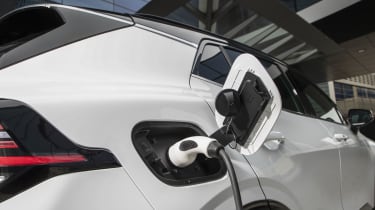
Are PHEVs tax-free?
Whether your plug-in hybrid is completely tax-free depends more on when you bought it rather than the exact type it is. In April 2017, the Department for Transport introduced a new set of Vehicle Excise Duty (VED) bands. These apply to all new cars registered after 1 April 2017.
Under the current system, only zero-emission cars are exempt from VED, so PHEVs registered in April 2017 or later are liable for road tax. This is generally £155 a year (a £10 discount on the regular £165 annual rate), but can be more if your car's list price (including any selected options) exceeds £40,000. In that case, you need to pay an additional £355 the first five times you tax it, taking the annual bill in that period to £510.

How do I get the most out of my PHEV?
Just like a regular electric car, there are many ways to maximise your plug-in’s battery range. Try to accelerate smoothly and steadily when in full electric mode, as rapid acceleration and harsh braking will reduce the range. Also consider switching off features such as the air-conditioning if you don't really need them, as this draws current from the batteries, too.
Something else that can make a difference is the condition of your tyres and their pressures. Properly inflated tyres reduce road resistance and therefore mean your engine or electric motor (or both) doesn't have to work quite as hard to move the car forwards.
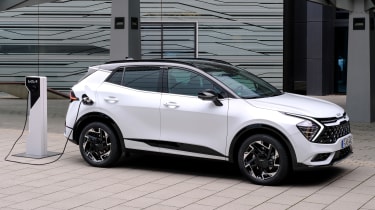
How do I charge a PHEV?
You charge a PHEV in the same way you charge an electric car. The first thing you need to do is make sure you know the type of plug your car requires. Most PHEVs come with a Type 2 plug as standard.
At home, you can use a standard three-pin socket to charge your PHEV, but this will take several hours. The exact time depends on the size of your car's battery. Renault claims that a three-pin socket would take around four to five hours to top up the battery of an Captur E-TECH plug-in, which could well be all you need if you leave the car to charge overnight.
To locate charging stations for topping up while out and about, use your car's built-in sat nav (most PHEVs have it), or download a dedicated charging-point app. These all display charging points near your current location and the best ones should also display information such as whether they're currently occupied or out of order, what type of cable connections they have, how much they charge and who operates them.
Most Popular
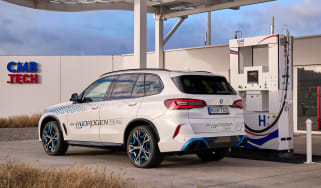
Where can I buy hydrogen and where is my nearest hydrogen filling station?

Revamped BMW i4 targets executive EV top spot
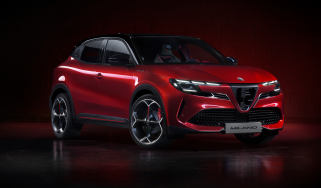
New Alfa Romeo Junior: the baby electric SUV formerly known as Milano